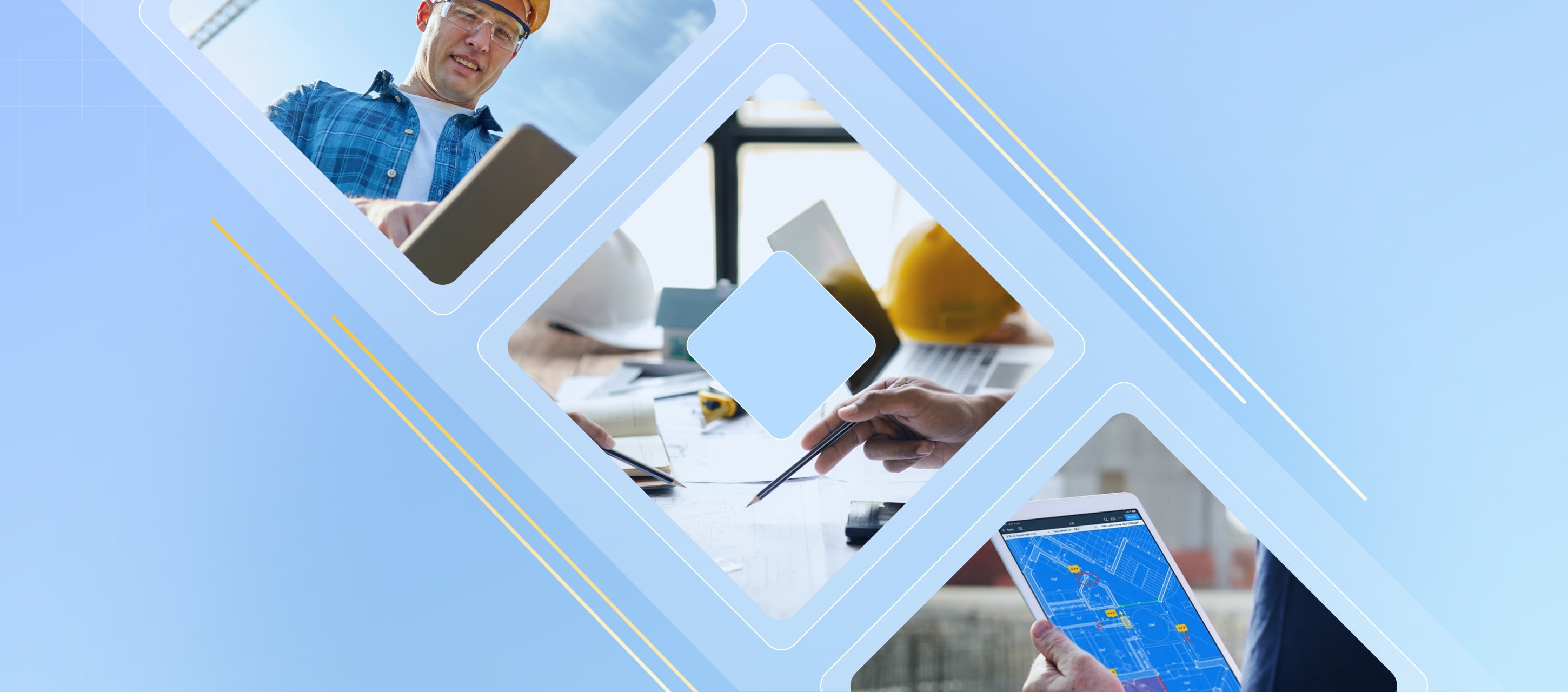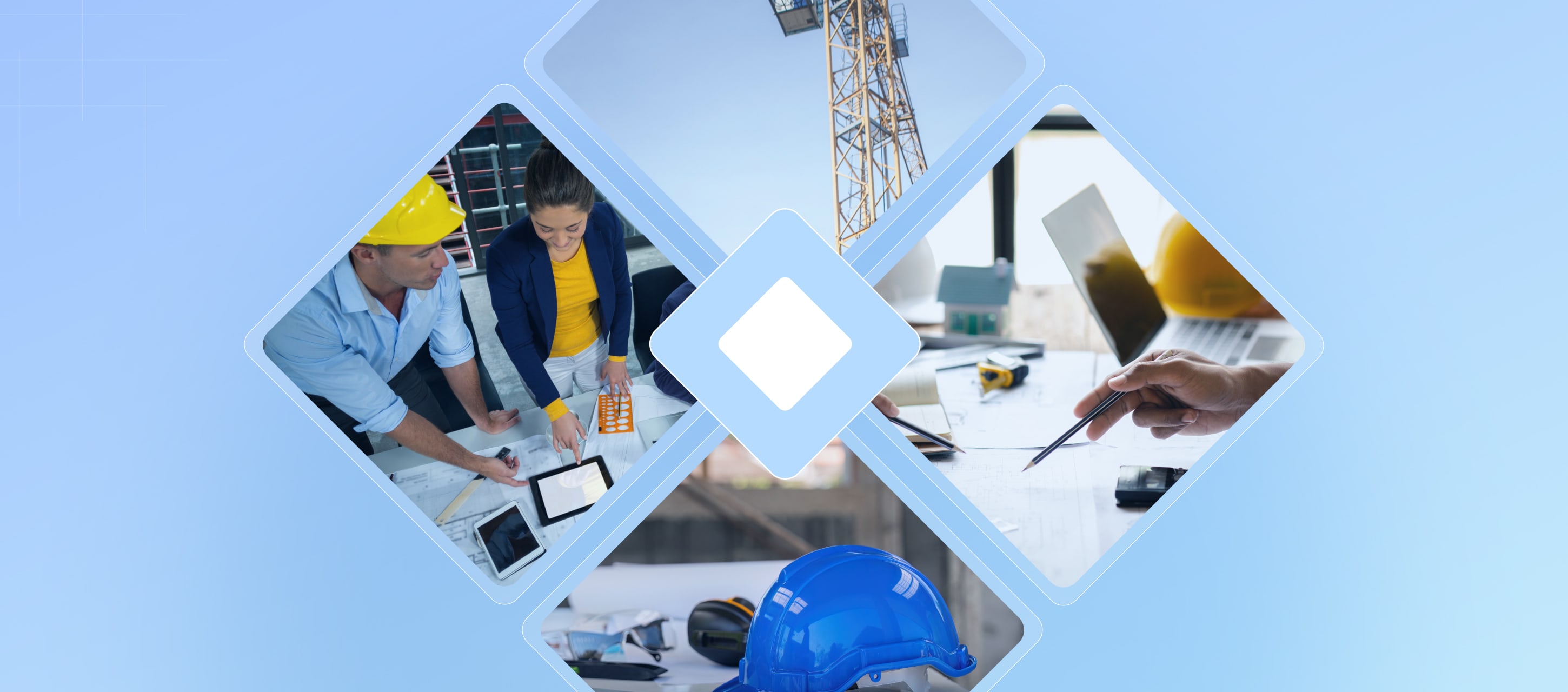Construction can be a high-risk business with even greater rewards. Your results largely depend on the quality of your construction risk management.
In fact, 70% of construction projects exceed their budget or deadlines due to poor risk management practices.
Carve out a few minutes to review this guide. We’ll help you learn what you need to know about risk management in construction work.
Contents:
What Is Risk Management in Construction?
Construction risk management is all about recognizing and responding to circumstances that could negatively impact your project.
To handle it properly, you first need to understand the difference between risks and actually hazards.
So, a hazard is a specific situation that could cause harm, while a risk is the chance and severity of that harm happening. For example, an exposed wire is a hazard, and the risk is that someone might touch it while it’s live, resulting in serious injury or worse.
Everyone on a project can contribute to managing construction projects effectively. By communicating well in the first place. Clear communication helps ensure that all team members understand the potential hazards and risks they face.
The owner’s vision and the design team’s plans provide the foundation, but as the project progresses, the project manager and general contractor must keep risk management front and center to stay on track. Think of it as a safety net that catches issues before they spiral into larger problems.
Why Is Construction Risk Control Important?
The goal of construction risk management is to reduce high-risk hazards or, ideally, eliminate them. But it doesn’t stop at physical dangers – any risk, whether financial, legal, or otherwise, falls under this process.
What can that give you? Numerous benefits, including:
- It leads to the timely and profitable completion of high-quality projects.
- Your sites are safer, which attracts the best contractors, employees, and customers.
- Your company avoids costly litigation that drains your time and resources.
- You get excellent results the first time on projects, resulting in less rework and fewer disputes.
As a result, you have a stronger brand image that promotes long-term stability. Plus, you’re prepared and equipped to create your construction risk management.
Read More Read More How proactive safety observations can protect your workplace from hazards
5 Main Construction Risk Categories
To ensure your project runs smoothly, it’s important to tackle potential construction project risks head-on. Below are the key areas you should address.
1. Financial
Financial risk is the potential for losing money or profits due to a failed project.
Going over budget or exceeding deadlines are all too familiar risks of construction. These risks can leave your company with poor liquidity and struggling to cover even basic expenses.
Sometimes, external factors like political instability can disrupt supply chains and increase prices, throwing your construction project budget off track. To avoid this, always prepare for the unexpected and stay flexible.
2. Project
Project risk involves errors in managing resources, time, or workflows.
Poor documentation or ineffective workflows can derail a project, leading to delays, rework, and overspending. To ensure smooth progress, you need to plan for labor shortages and make sure you’re allocating resources efficiently.
3. Safety
Safety risk is the chance of accidents or injuries on-site.
When experienced workers become overconfident, safety protocols can easily be overlooked. This not only leads to accidents, but it can also result in costly medical bills or the loss of skilled team members. To keep your site safe and productive, make safety management in construction a top priority.
4. Legal
Legal risks come from potential lawsuits or failing to meet contract requirements.
Legal battles can drain your time and resources, even if you’re in the right. If a project doesn’t meet contractual obligations or violates local codes, you could face costly rework or fines. Worse, legal disputes can damage your company’s reputation, making it harder to win future projects.
5. Environmental
Environmental risks are natural disasters that disrupt your project.
Storms, floods, earthquakes – nature doesn’t always play nice. If you don’t plan for these potential events, they can derail your entire project and lead to a domino effect across all other risk areas. By preparing for the unexpected, you can minimize damage and keep things moving.
How You Can Manage Construction Risks
Before building any risk management plan in construction, it’s essential to understand the main approaches for handling risk:
Avoidance
Avoiding risk means eliminating it altogether. One way is by adding contract clauses that shift responsibility for certain situations off your shoulders.
For example, include provisions for timeline adjustments in case of natural disasters, or refuse tasks that are too risky. The ultimate form of avoidance, though, is turning down a project.
While you wouldn’t want to reject a profitable job with manageable risks, knowing when to walk away from a project with a bad risk-reward ratio can save you major headaches down the road. To avoid unnecessary loss is to stay one step ahead.While you wouldn’t want to reject a profitable job with manageable risks, knowing when to walk away from a project with a bad risk-reward ratio can save you major headaches down the road. To avoid unnecessary loss is to stay one step ahead.
Transfer
Transferring risk means passing some of the burden onto others. Contracts should clearly specify which risks fall on the client, subcontractors, or suppliers. Another way to transfer risk is through insurance.
Be sure you fully understand what a policy covers, so you avoid overinsuring or underinsuring yourself – both can be costly mistakes. Think of it as sharing the load, ensuring that not all the risk sits on your shoulders.
Mitigation
Mitigating risk involves reducing its potential impact. This is often the most common approach and requires careful planning.
By focusing on detailed workflows, consistent documentation, regular reviews, and open communication, you can reduce risks to a manageable level. Like putting up safety barriers before a storm, mitigation means you’re preparing in advance so the job can weather any challenges.
Acceptance
Sometimes, accepting a risk is the best choice, especially when the impact or likelihood is low. However, it’s important to weigh the pros and cons carefully—never accept a risk that could cause irreparable harm to your company. To accept risk wisely is to recognize when it’s manageable and when it’s better left untouched.
Remember, these strategies aren’t one-size-fits-all. Your construction risk management plan will likely include a mix of them.
Learn More Learn More 5 best construction daily report tools to help with risk management
Construction Risk Management Process Steps
In just five steps, you can build a comprehensive plan for managing construction risks and improving your overall construction process management:
Step 1. Identify Risks
Start with a preconstruction meeting that includes all stakeholders. Brainstorm any potential threats by looking at previous projects and considering the five key risk categories: financial, project, safety, legal, and environmental. These conversations should continue throughout the project to track any new developments.
Step 2. Estimate the Consequences
Focus on risks that pose the greatest threat or are most likely to occur. Using a risk assessment template, or construction management software, can help here.
The tools available for digital transformation in the construction industry today make it easier than ever to calculate the likelihood and impact of each risk, allowing you to make informed decisions. To know the future is to be prepared, and these tools help predict what could go wrong.
Step 3. Determine Your Response Strategy
Now, choose how you’ll handle each risk: avoid, transfer, mitigate, or accept. For high-impact risks, create backup plans, and assign someone to oversee each risk.
Clearly outline the resources they can use to manage any challenges that arise. It’s important to ensure no risk goes unowned—clarity leads to accountability.
Step 4. Enact and Monitor Your Plan
Once the project kicks off, your plan goes into action. Clear communication and quick reporting channels are crucial.
Monitor progress closely to catch any issues early and pivot when necessary. This keeps the project on track and ensures that if a backup plan is needed, it’s implemented smoothly.
Step 5. Perform a Post-Project Analysis
After the project wraps up, evaluate your risk management process. What worked? What didn’t? Document these findings so your next project runs even smoother. Reflection is key to continuous improvement.
Read More Read More How ZITON reduced the time required to complete process control checklist by 72%
Tools for Construction Risk Management
With the right tools, managing construction risks becomes much easier. Some helpful tools include:
- Mobile data collection tools: Tools like Fluix can let your teams fill out forms, caprire site data and submit it for quick reviews using the app on mobile devices.
- Prequalification software: Vetting subcontractors is crucial to minimizing risk. Tools like TradeTapp assess subcontractor qualifications, financial health, and past project performance to help you make informed decisions.
- Modeling software: 3D modeling and Building Information Modeling (BIM) software can help identify physical risks by creating accurate digital representations of a project before construction begins. Autodesk BIM 360, for instance, allows for collaborative design review, which can catch potential design flaws early.
- Drones and 3D cameras: Drones like those from DJI and 3D cameras enable real-time aerial site monitoring, offering detailed views of a project’s progress, which can help identify and mitigate safety risks.
- Budgeting software: For example, Procore helps track project costs in real-time, uncovering financial risks related to overspending and unexpected costs.
- Safety management apps: Apps like SafetyCulture allows teams to perform safety inspections, report incidents, and track safety compliance on-site, reducing the likelihood of accidents and ensuring regulatory standards are met.
Predictive analytics tools:This AI-powered tool Smartvid.io can analyze construction site photos and videos to predict safety risks, allowing you to take proactive steps in avoiding potential hazards.
However, the backbone of construction risk management lies in specialized job site field management software that takes care of critical documentation and workflows.
That’s where Fluix comes in. Fluix provides a single source of truth for all your documents and workflows, ensuring your entire team can follow risk management guidelines with ease.
The cloud-based system streamlines reporting and documentation, allowing workers to fill out safety checklists and submit photo documentation directly from their mobile devices.
Fluix also offers built-in reporting tools that give you clearer insights into potential risks, while integration with other productivity software speeds up data collection. Its dashboards provide real-time updates on project activity, helping you monitor your risk management plan and adjust as needed.
By incorporating the above mentioned strategies and tools, you can anticipate challenges, minimize disruptions, and ensure smoother operations from start to finish.
Remember, a solid risk management plan doesn’t just protect your project—it safeguards your reputation and long-term success. To take your construction risk management to the next level, explore the solutions that best fit your team’s needs and start implementing them today.






